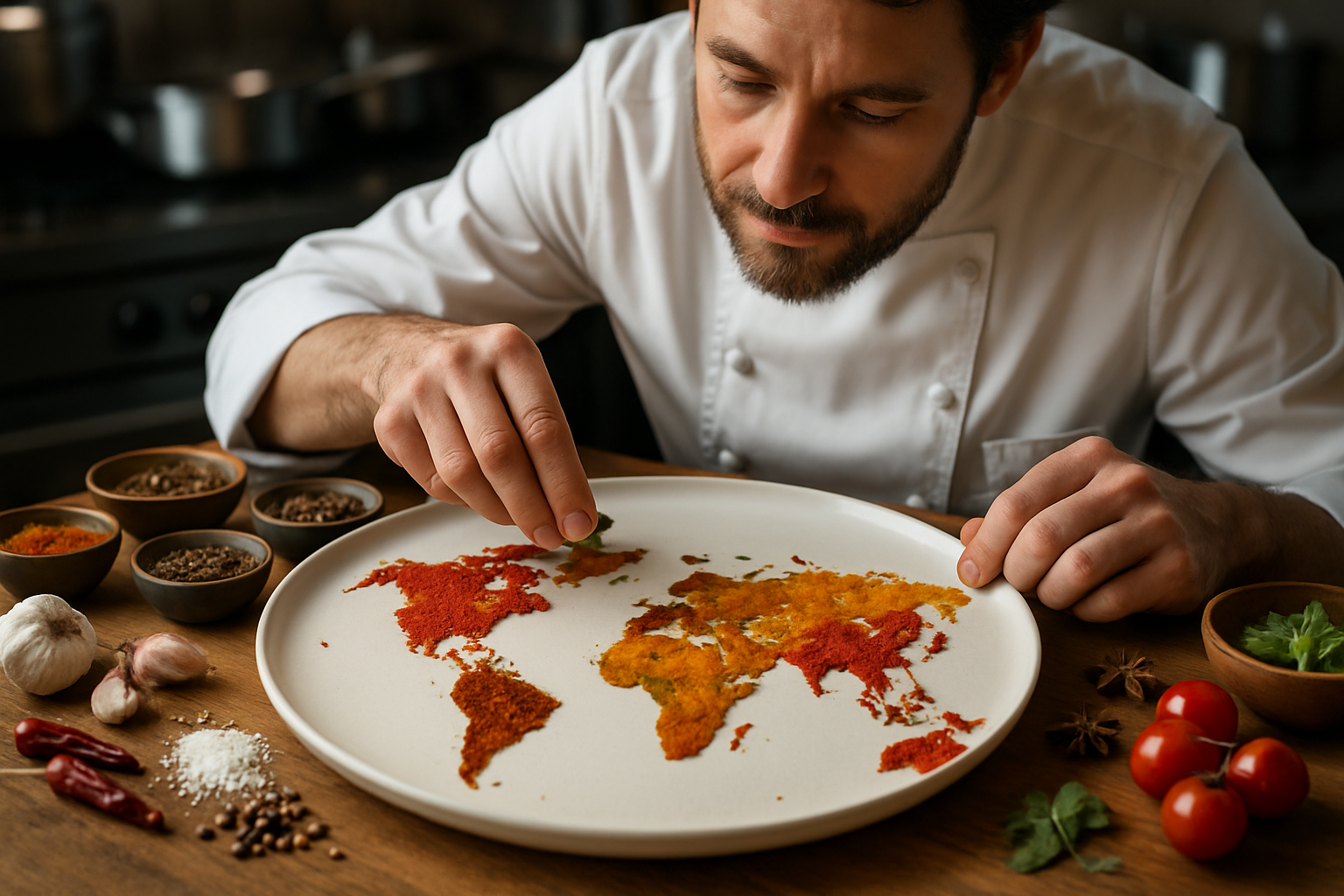Culinary Alchemy: Transforming Everyday Ingredients
Embark on a gastronomic adventure that reimagines familiar ingredients in extraordinary ways. From humble vegetables to everyday spices, discover how innovative chefs and home cooks are pushing culinary boundaries, creating unexpected flavors and textures that challenge our perceptions of food. Get ready to explore the art of culinary alchemy and unlock a world of delicious possibilities.

Spice Alchemy: Elevating the Ordinary
Spices have long been the secret weapons of skilled cooks, but modern culinary alchemists are taking spice blending to new heights. By combining unexpected flavors and applying innovative techniques, chefs are creating spice blends that transform ordinary dishes into extraordinary culinary experiences. One emerging trend is the use of smoked spices, where traditional spices like paprika or cumin are cold-smoked to add depth and complexity to their flavor profiles. Another exciting development is the creation of spice pastes that incorporate unconventional ingredients like coffee grounds or dried fruits, adding layers of flavor to marinades and sauces. Chefs are also experimenting with fermented spice blends, which not only intensify flavors but also introduce probiotic benefits. These innovative spice creations are not just limited to high-end restaurants; home cooks are increasingly experimenting with their own blends, guided by online communities and specialty spice shops that encourage culinary exploration.
Liquid Alchemy: Reinventing Beverages
The world of beverages is experiencing a renaissance, with mixologists and drink innovators pushing the boundaries of what’s possible in a glass. One exciting trend is the rise of “zero-proof” cocktails, which mimic the complexity and sophistication of alcoholic drinks without the alcohol. These beverages often incorporate unique ingredients like kombucha, kefir, or housemade shrubs to create depth and balance. Another area of innovation is in coffee and tea preparation. Cold brew coffee infused with nitrogen creates a creamy, stout-like beverage, while tea sommeliers are experimenting with tea-based cocktails and unique brewing methods like sonic-aging, where sound waves are used to accelerate the aging process of teas. Functional beverages are also getting a makeover, with adaptogenic lattes and probiotic sodas offering health benefits in delicious packages. These liquid alchemists are not just mixing drinks; they’re crafting experiences that challenge our perceptions of what a beverage can be.
Textural Transformations: Playing with Mouthfeel
Texture plays a crucial role in our enjoyment of food, and culinary alchemists are harnessing this knowledge to create dishes that surprise and delight the palate. One innovative technique gaining traction is spherification, where liquids are encapsulated in a thin gel membrane, creating burst-in-your-mouth experiences. Chefs are applying this technique to everything from olive oil to fruit juices, adding unexpected textures to familiar flavors. Another textural innovation is the use of edible foams, which can add a light, airy element to dishes without overwhelming the primary flavors. These foams can be savory or sweet, made from ingredients as diverse as mushrooms or chocolate. Crispy garnishes made from dehydrated ingredients are also becoming more prevalent, adding crunch and intensity to dishes. By playing with texture, chefs are creating multi-sensory experiences that engage diners on multiple levels, transforming a simple meal into an adventure for the senses.
Waste Not, Want Not: Upcycling in the Kitchen
In an era of increasing environmental awareness, culinary alchemists are finding innovative ways to reduce food waste by transforming typically discarded ingredients into delicious creations. Vegetable peels, traditionally destined for the compost bin, are being transformed into crispy chips or flavorful stocks. Fruit pulp left over from juicing is finding new life in baked goods or as a base for fruit leathers. Even coffee grounds are being upcycled, used in everything from body scrubs to mushroom growing mediums. This trend extends to commercial food production, where byproducts like whey from cheese-making are being repurposed into protein-rich beverages or fermented into unique alcoholic drinks. By viewing food scraps as valuable ingredients rather than waste, these culinary innovators are not only creating exciting new flavors and textures but also contributing to a more sustainable food system. This approach to cooking challenges us to reconsider our relationship with food and encourages creativity in the kitchen.
Culinary Alchemy Tips & Facts
• Experiment with sous vide cooking to transform tough cuts of meat into tender delicacies
• Try candying herbs like rosemary or thyme for unique, aromatic garnishes
• Use liquid nitrogen to instantly freeze and shatter herbs, creating flavorful herb “dust”
• Explore molecular gastronomy techniques like reverse spherification to create caviar-like beads from any liquid
• Infuse oils with unexpected ingredients like coffee beans or pine needles for unique flavor profiles
• Use a smoking gun to add smoky flavors to dishes without traditional smoking methods
• Experiment with fermentation to transform flavors and create probiotic-rich foods
In conclusion, culinary alchemy is more than just a trend; it’s a movement that challenges us to rethink our relationship with food. By transforming familiar ingredients into extraordinary creations, innovative chefs and home cooks alike are expanding our culinary horizons and inspiring a new generation of food enthusiasts. As we continue to push the boundaries of what’s possible in the kitchen, we’re not just creating new dishes – we’re crafting experiences that engage all our senses and challenge our perceptions. The art of culinary alchemy reminds us that with creativity, skill, and a dash of daring, the possibilities in the kitchen are truly limitless. So, the next time you step into your kitchen, remember: you’re not just a cook, you’re an alchemist, capable of turning the ordinary into the extraordinary.





